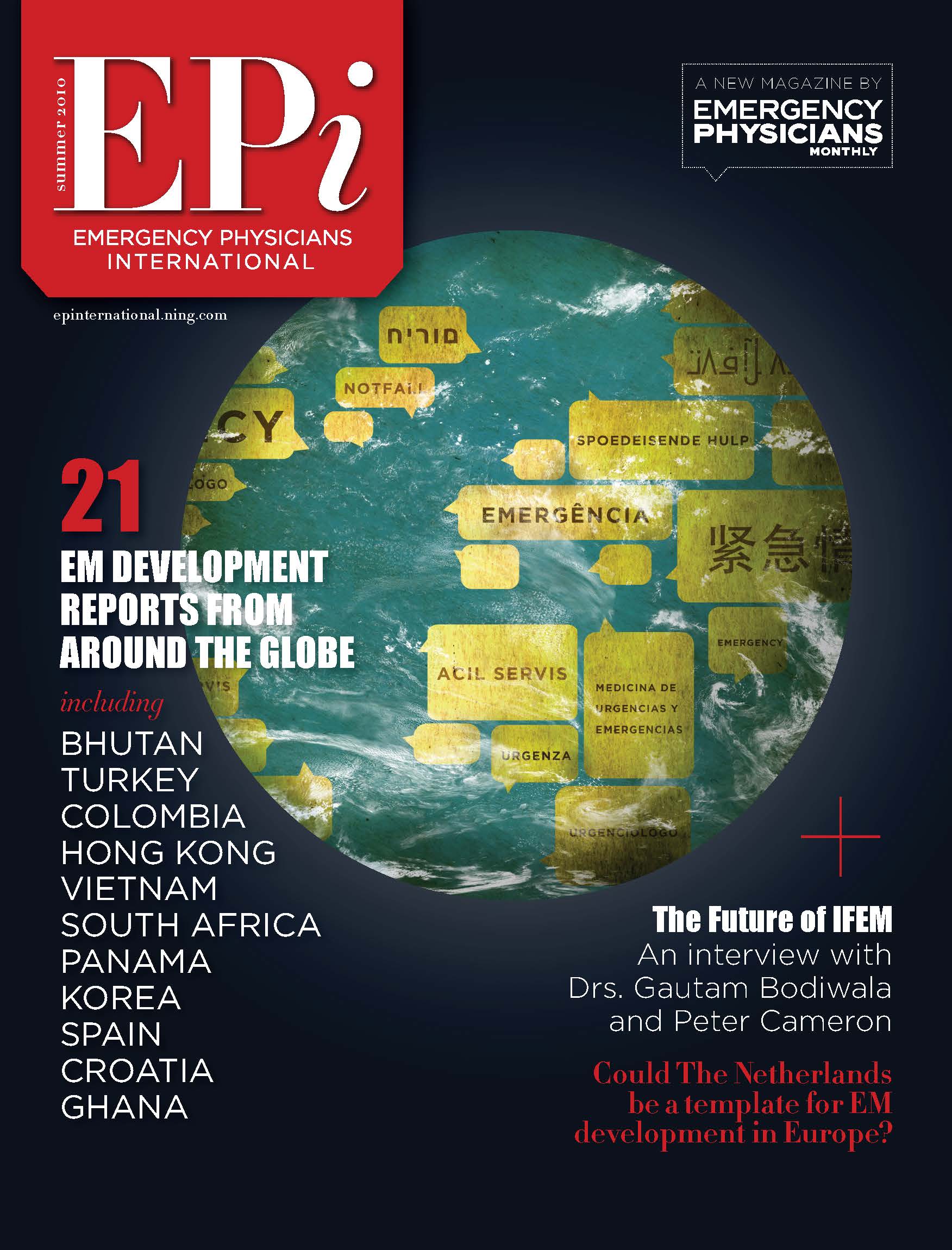The Solution to Climate Change Must Include Nuclear Disarmament
Though there are often questions about the role of political activism in medical communities, there are many organized ways to use medicine as a tool for activism, rather than operating in each field in isolation. In the following piece, Dr. Carlos Umaña explores climate change and nuclear disarmament in terms of how they could invoke disaster on the resources and network that make care possible. In the face of the COVID-19 pandemic, he jumps into activism and contextualizes the potential for exponentially greater damage to healthcare systems and humanity.
Global Health Webinar – 21 January, 2021 – IPPNW celebrating the Entry into Force of the Treaty on the Prohibition of Nuclear Weapons with leaders of the World Medical Association, International Committee for the Red Cross, World Federation of Public Health Associations, International Council of Nurses, and the International Federation of Medical Student Associations.
In this global crisis caused by the COVID-19 pandemic, the world has become aware of the importance of following science and evidence in policymaking, and there is a greater understanding of where true security actually lies and which countries and systems are more capable of protecting their people.
This pandemic is a symptom of a disease that ails humanity, and that could very well lead to more pandemics once this one is over, if we, as a global community, do not take drastic action. This COVID-19 crisis has exposed many systemic flaws and vulnerabilities, and as serious as its impact has been to our health and our economies worldwide, it is not an existential threat, and its impact is insignificant compared to that of the impending climate crisis and of a nuclear war, whatever its proportions.
Climate change and nuclear weapons are the 2 existential threats to life on Earth. They are intricately linked and mutually reinforcing. With the world’s climate being as unpredictable and changing as it currently is, the climate crisis is impossible to ignore. However, most people do ignore how serious the risk of nuclear war is and why nuclear disarmament is more important today than ever.
To solve the climate crisis, we are often told it is a matter of costs and political will. Let’s talk about the costs.
As per the U.S. Environmental Protection Agency, in the US alone, the costs of the damages caused by extreme weather events were $400 billion dollars in 2018, and this cost could easily reach $3 trillion dollars by the year 2050. The cost of air pollution from burning fossil fuels is estimated to be about $176 billion dollars per year, or up to $5.2 trillion dollars, in total, by 2050.
Nuclear weapons, which are militarily and politically obsolete and suicidal, are extremely expensive to maintain. Current investment in nuclear weapons has been calculated to be as high as $116 billion dollars per year and rising.
Moreover, many of the political resources and scientific talent needed for ecological innovation are currently engaged in the development of nuclear weapons that, far from solving our urgent existential problems, rather threaten life on the planet.
The climate crisis increases the risk of nuclear war.
The Doomsday Clock is a symbolic clock made by the Bulletin of Atomic Scientists that measures the risk of total catastrophic man-made destruction in minutes to midnight, midnight being said destruction. It currently marks 100 seconds midnight, the greatest risk in history. This is roughly due to three factors: the unstable political leadership in the nuclear weapon states, the increased risk of an accidental nuclear detonation or cyberterrorism due to the vulnerability of high alert systems and their increasing reliance on automation, and climate change.
Climate change multiplies the potential for conflict over resources such as land, drinking water, and food reserves, and increases the pressure to migrate. Political collapse, in turn, leads to extremist leaders gaining control over nuclear weapons, and this poses a risk in regions where there already is political tension.
A single nuclear detonation, especially in current times, is capable of causing significant and irreparable environmental damage.
On the other hand, even a limited use of nuclear weapons would have catastrophic climate consequences. In a nuclear exchange between India and Pakistan, both nuclear-weapon states and often in conflict, with 100 Hiroshima-sized bombs, which is less than half their arsenal and less than 1% of the global arsenal, the catastrophic impact would not only be local and regional, but also global. The world’s climate would be altered in such a way as to reduce harvest times for the staple grains on which many populations depend, leading to a famine that would kill more 2 billion people worldwide. This food shortage, in turn, would generate more conflicts, which could lead to a greater use of nuclear weapons. On a larger scale, a nuclear war would cause a destruction of unimaginable proportions, with tens of millions of deaths, with a very high radiation pollution of large areas, and a nuclear winter that would result in the destruction of our civilization and the extinction of many species, possibly even our own.
The solution to climate change must include nuclear disarmament. Nuclear weapons represent an unacceptable cost and risk and undermine the foundations of international cooperation and goodwill that are essential to resolving global crises.
To alleviate the climate crisis, a massive mobilization of resources is required. A large part of this capital investment could come directly from the substantial resources that would be released once nuclear disarmament is implemented. At the same time, the scientific talent and political resources currently involved in nuclear weapons can then be redirected to seek ecological innovations.
On the other hand, the solution to both threats must necessarily involve the entire international community. It is essential to channel the efforts of humanity towards fostering a culture of peace and strengthening the multilateral regime. The Treaty on the Prohibition of Nuclear Weapons (TPNW), adopted at the UN in July 2017 by 122 countries, is a solid step in this direction. The universalization and implementation of the TPNW will strengthen the multilateral regime, and promote scientific diplomacy and international cooperation, which are essential elements for tackling climate change. The signing and ratification of the TPNW must, therefore, be seen as urgent actions within the framework of the climate crisis.
The time for rhetoric is over. Faced with this double existential dilemma, humanity finds itself at a crossroads: we can either ensure our prosperity or ensure our own destruction. More than ever, the world needs dialogue; it needs social participation and pragmatic leaders, able to listen to science, make courageous decisions, and enact and implement constructive policies. It is imperative to give peace a chance. Our very existence depends on it.
Dr. Umaña, a Costa Rican physician [right], is IPPNW’s co-president. He gave this talk on April 21 at a virtual Earth Day event, “Overcoming the Crises of Climate Change, COVID-19, and Nuclear Challenges on Pacific and First Nations Communities,” sponsored by IPPNW, Nuclear Age Peace Foundation, Outrider Foundation, Prospect Hill Foundation, Marshallese Educational Initiative, Climate Cardinals, Zero Hour NYC, Peace Boat US, Marshallese Educational Initiative, Amplify, Youth Nuclear Peace Summit, and the Lawyers Committee on Nuclear Policy.
For more information – International Physicians for the Prevention of Nuclear War (IPPNW)




![Dr. Umaña, a Costa Rican physician [right], is IPPNW’s co-president. He gave this talk on April 21 at a virtual Earth Day event, “Overcoming the Crises of Climate Change, COVID-19, and Nuclear Challenges on Pacific and First Nations Communities,” sponsored by IPPNW, Nuclear Age Peace Foundation, Outrider Foundation, Prospect Hill Foundation, Marshallese Educational Initiative, Climate Cardinals, Zero Hour NYC, Peace Boat US, Marshallese Educational Initiative, Amplify, Youth Nuclear Peace Summit, and the Lawyers Committee on Nuclear Policy.For more information – International Physicians for the Prevention of Nuclear War (IPPNW)](https://images.squarespace-cdn.com/content/v1/5ae5252caa49a12c0f6d78b1/1620185656672-Y0UINFXBGAGKEFW8VLFW/Carlos+Umana+2.jpg)



